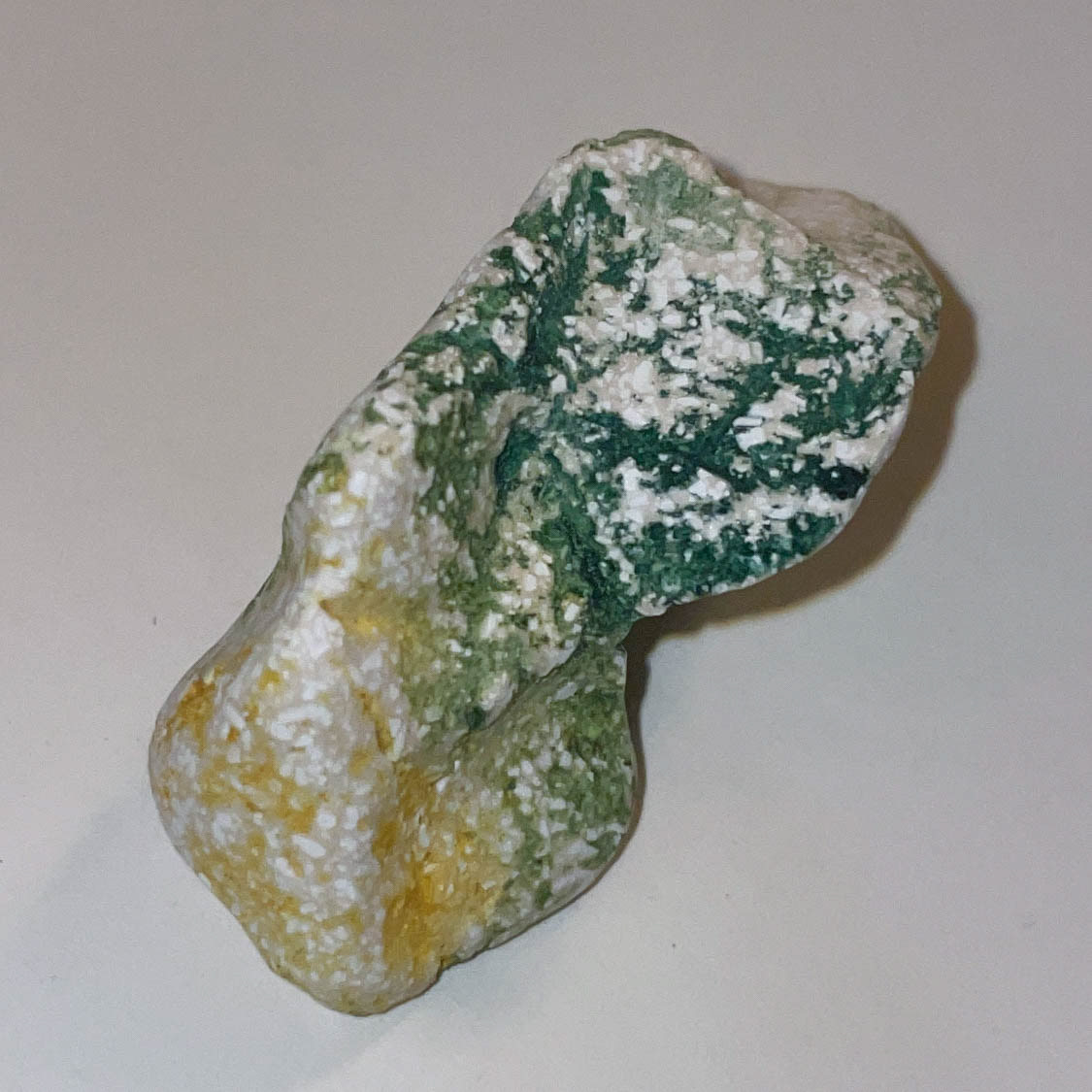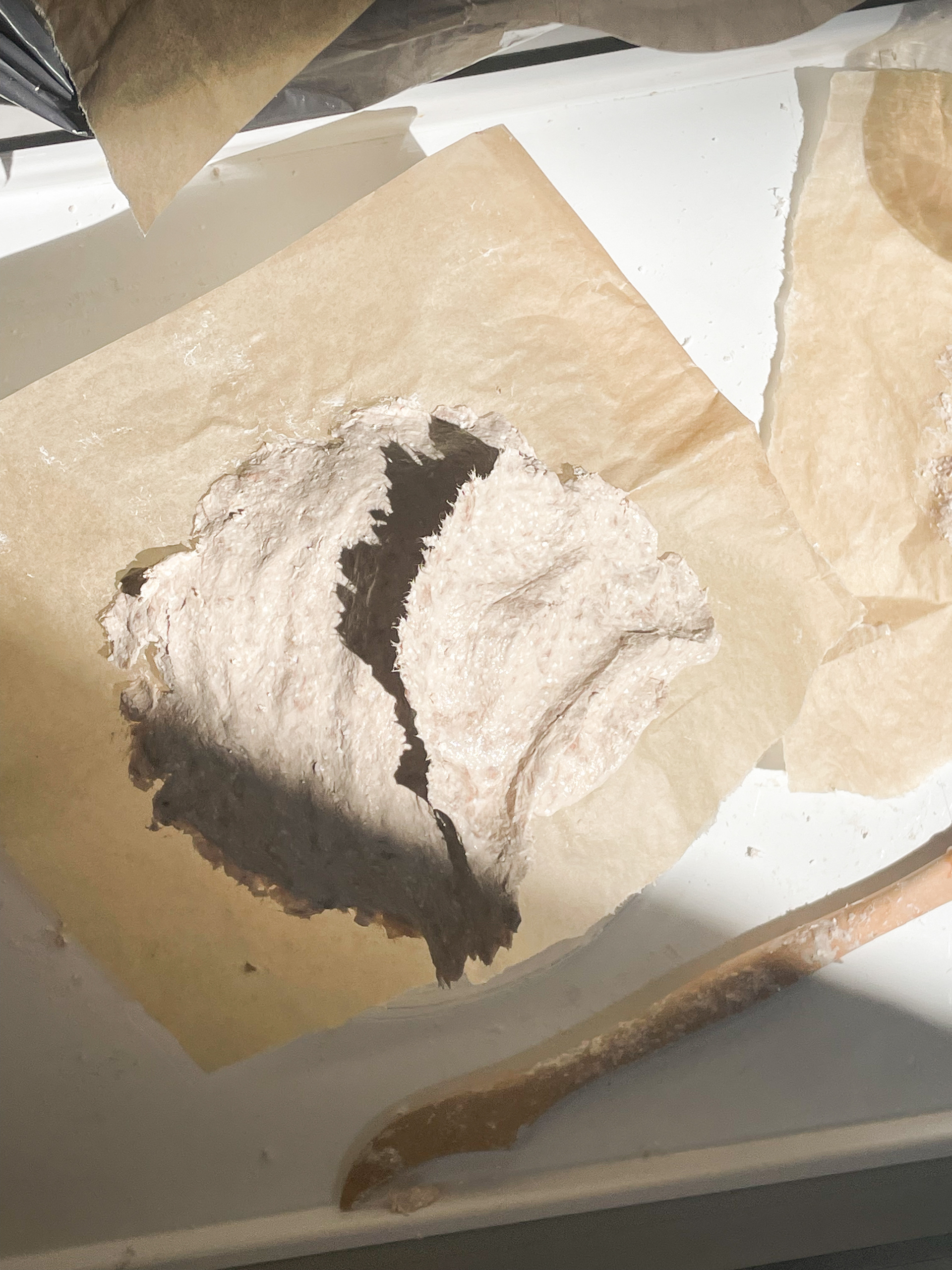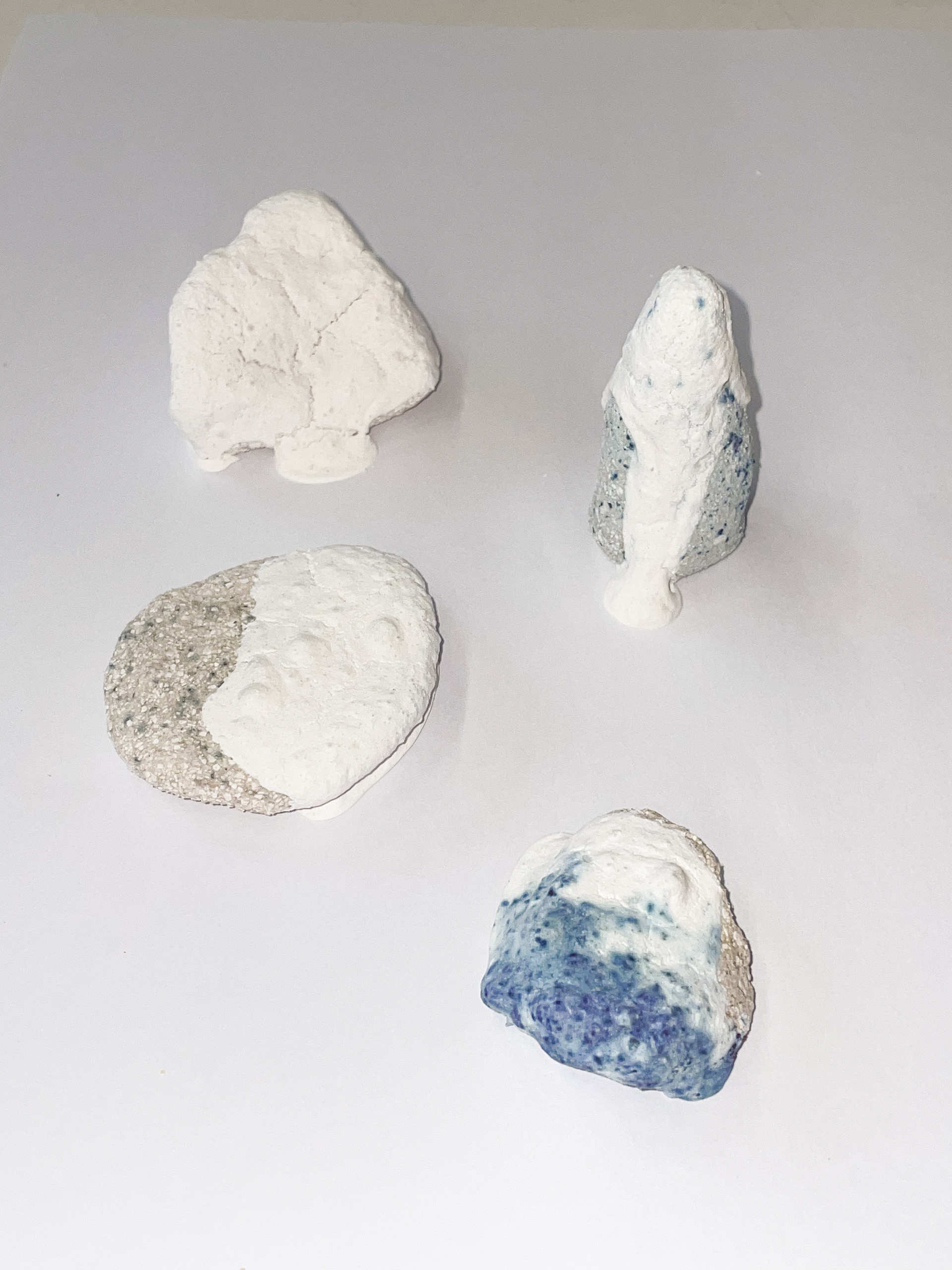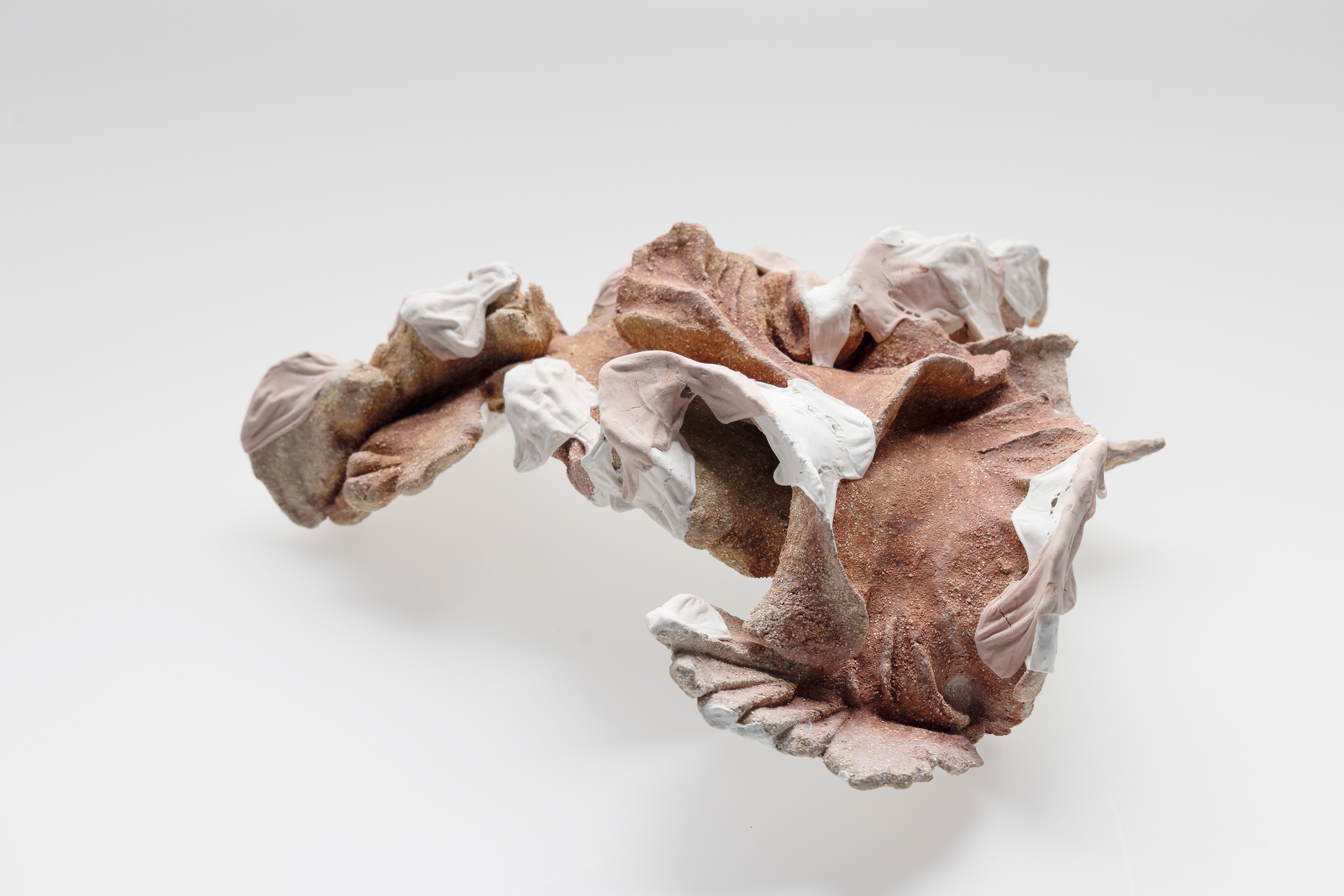
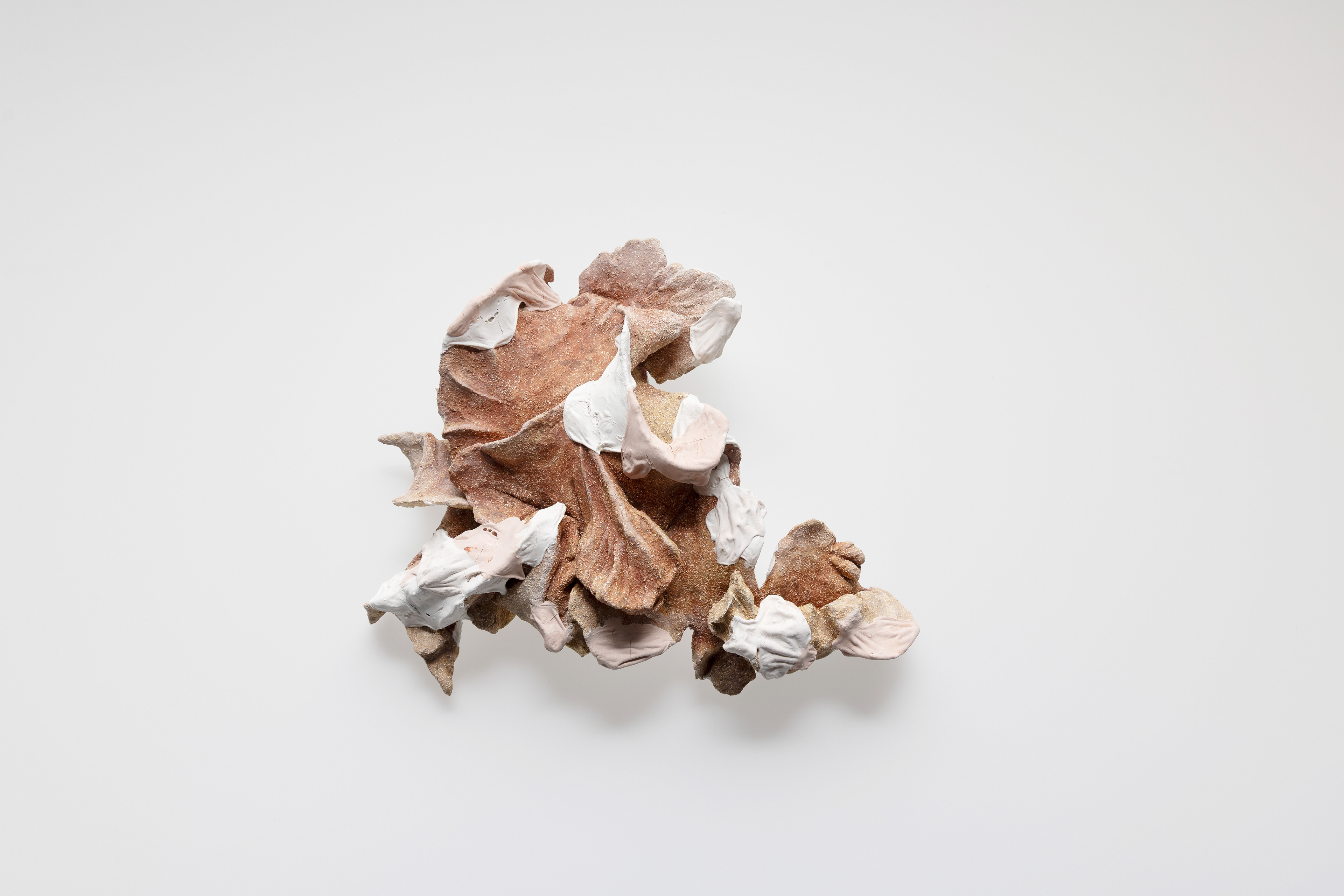
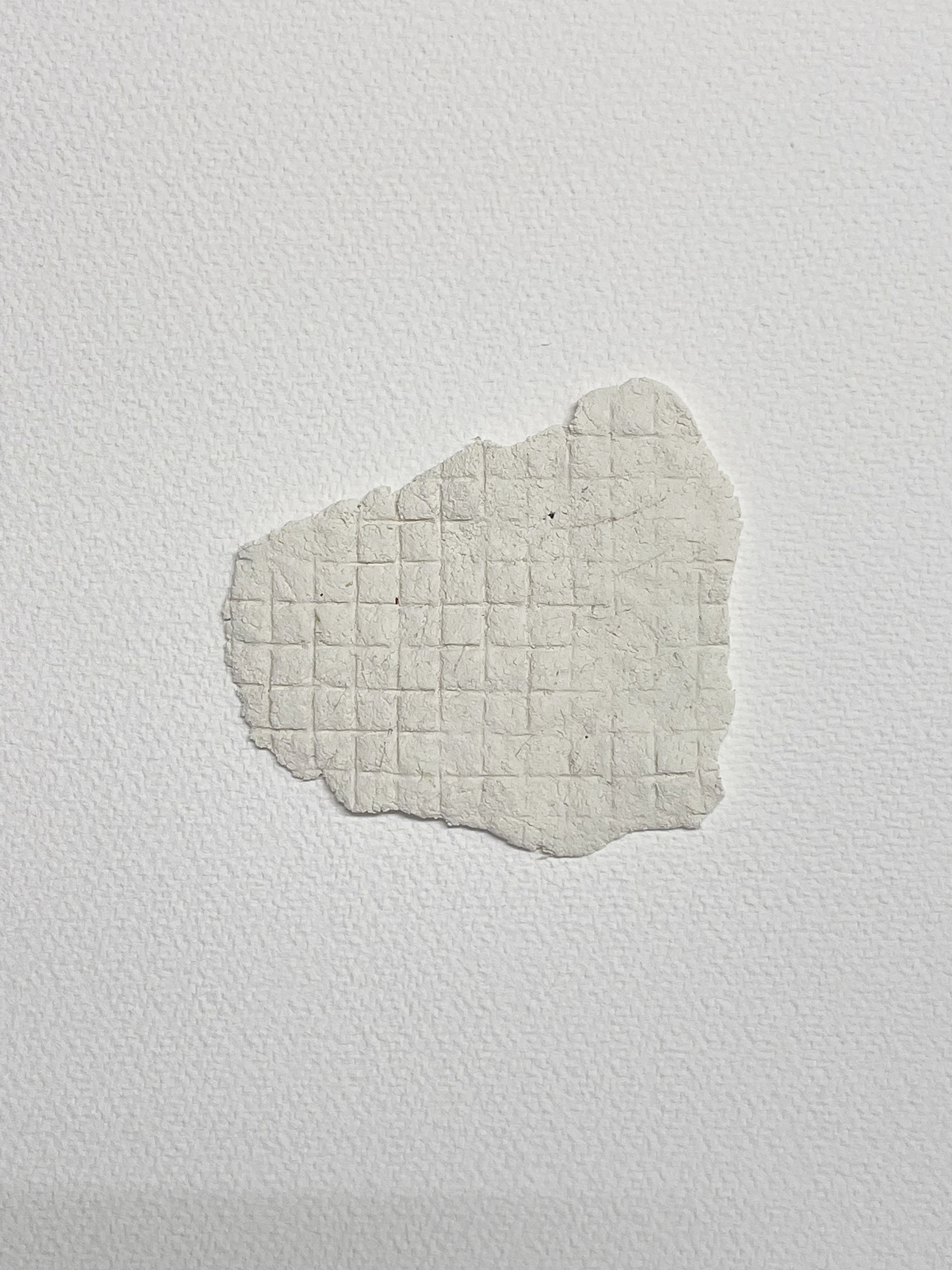
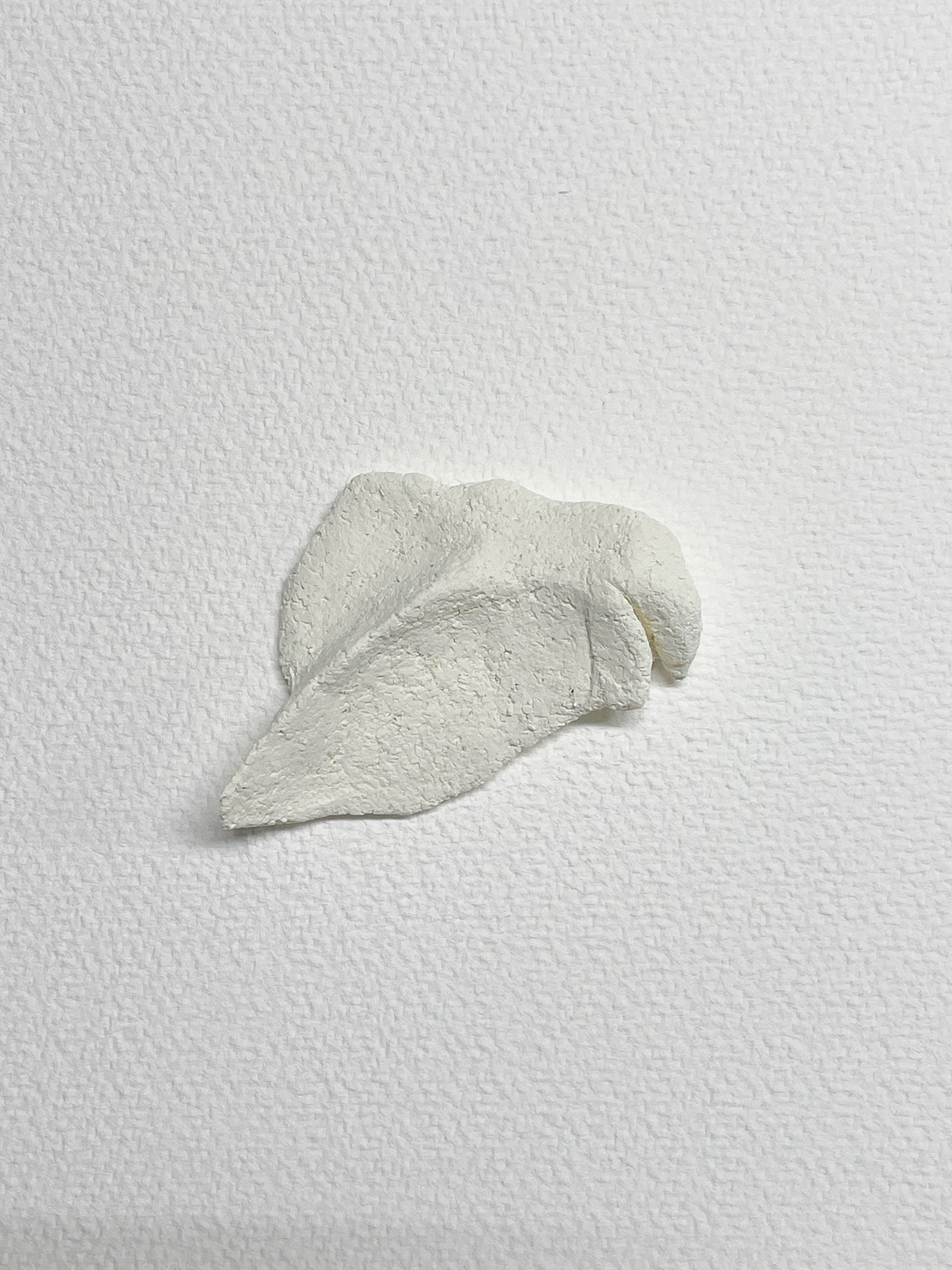
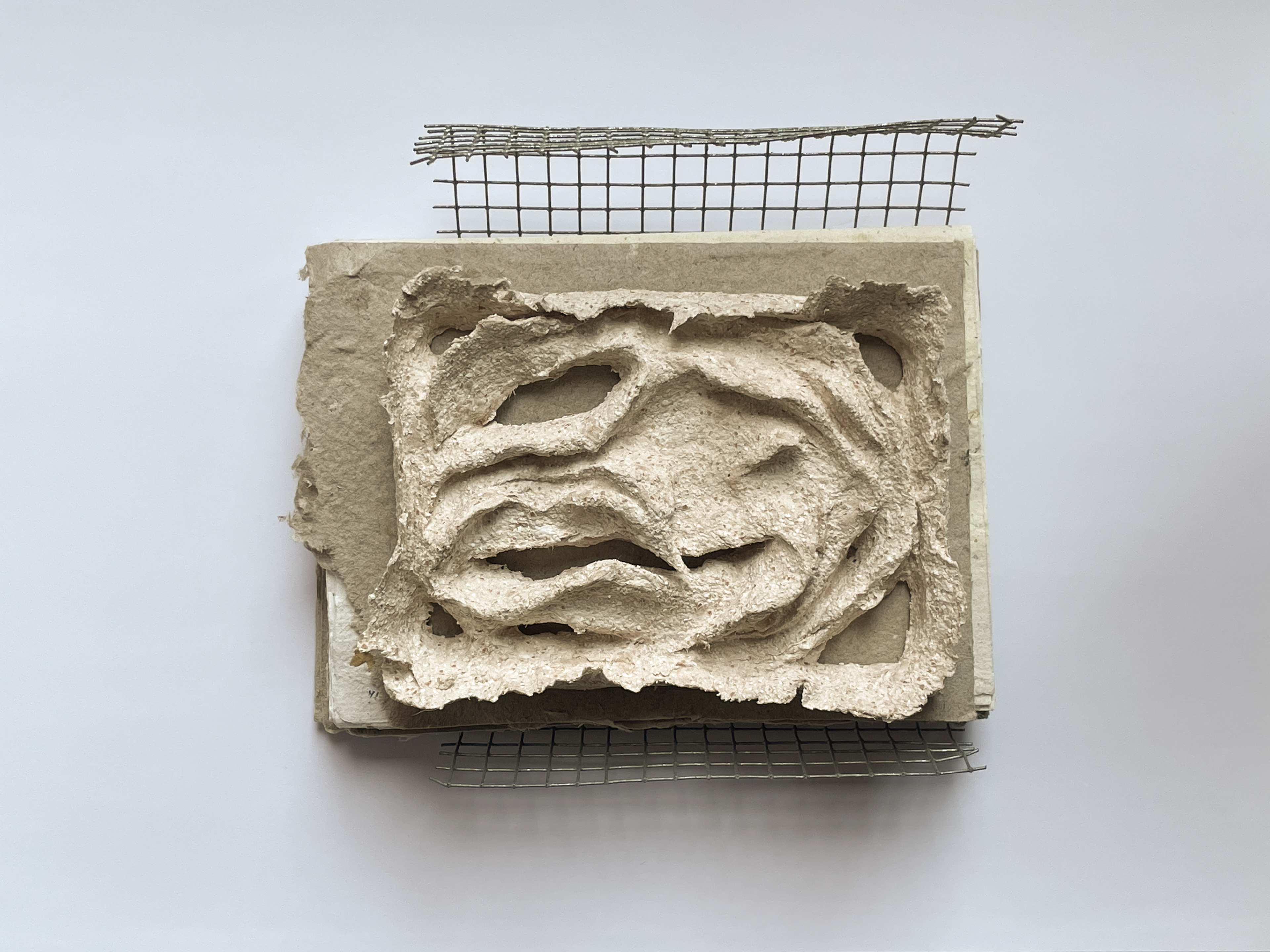
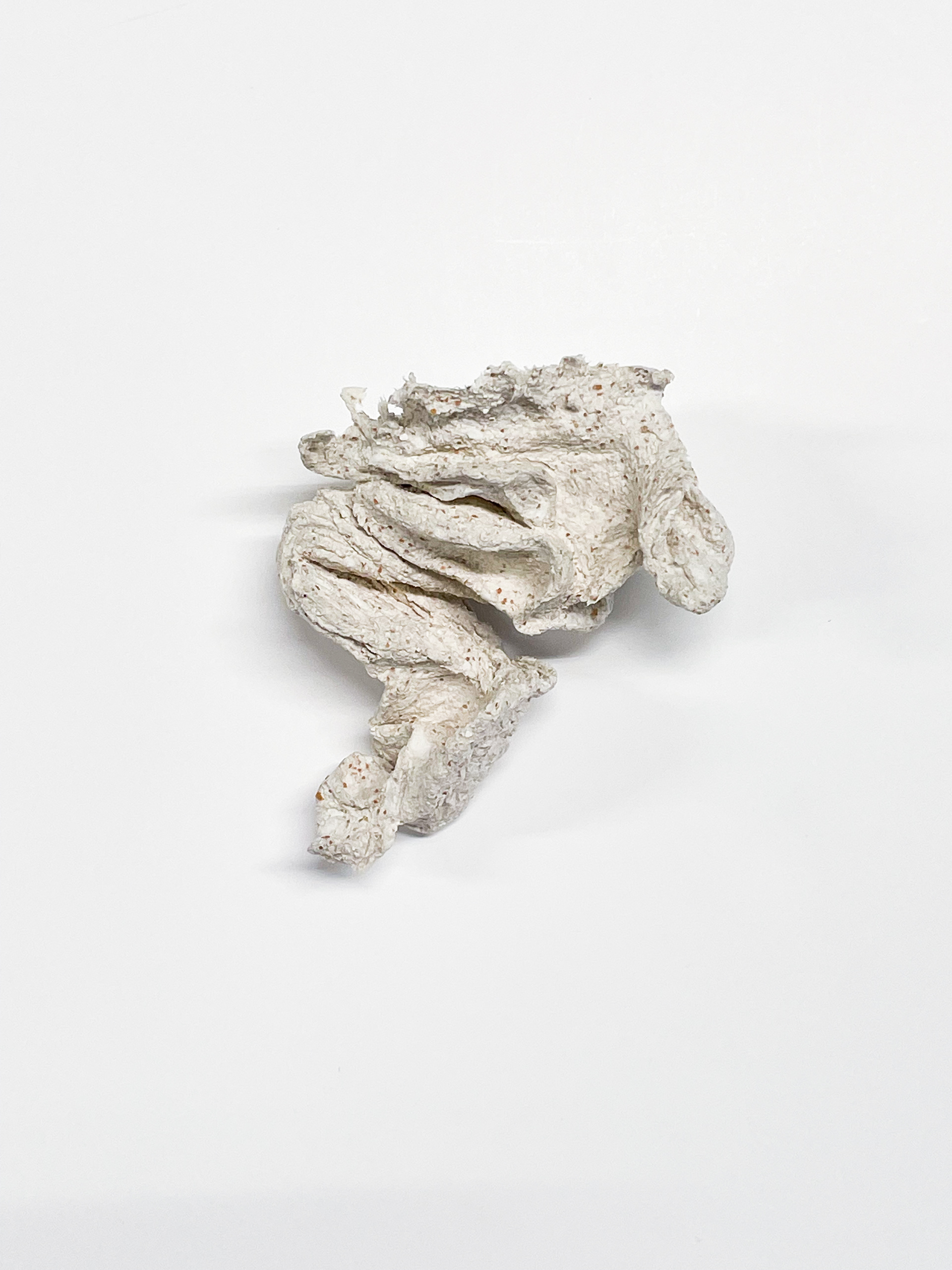
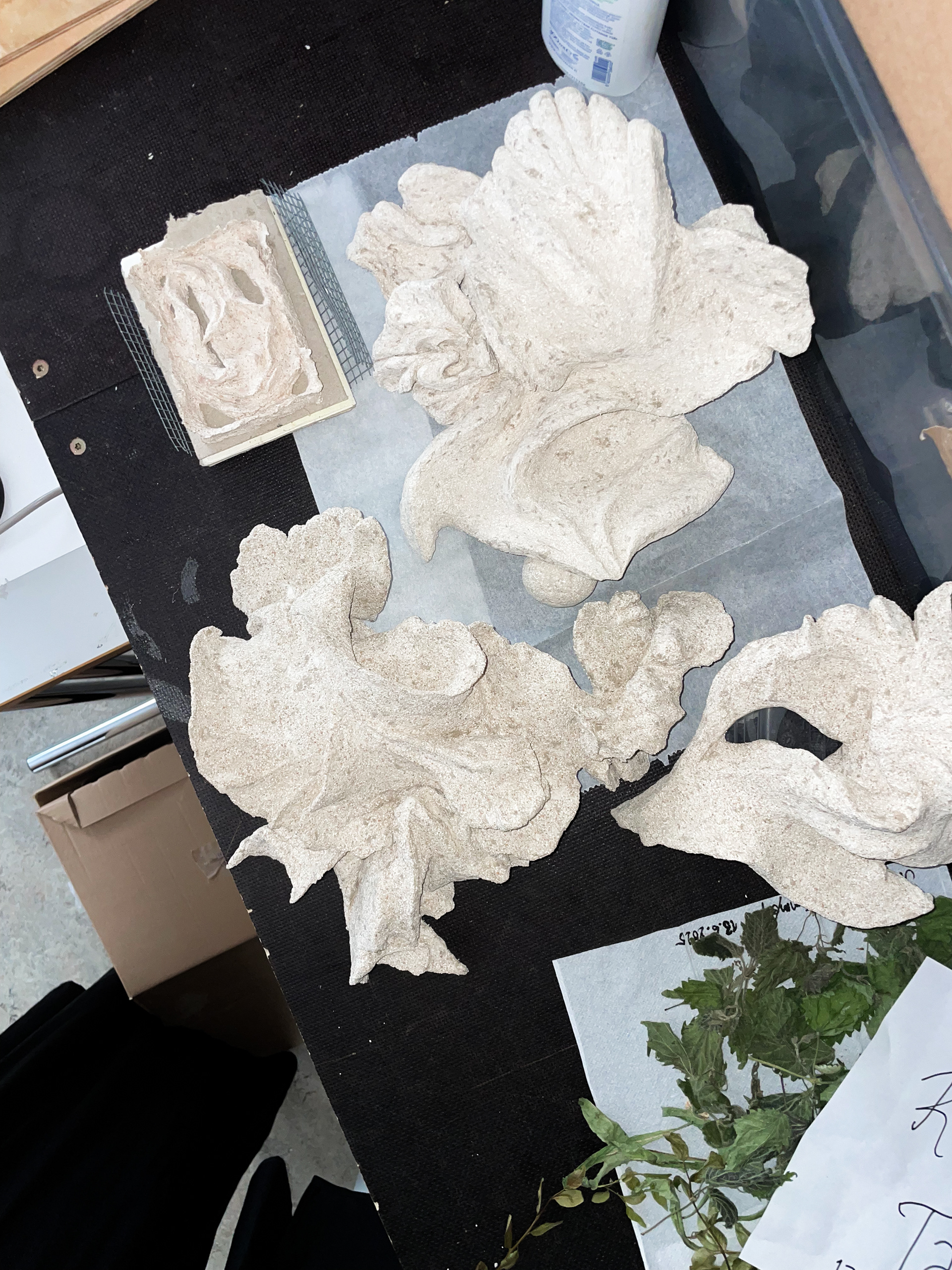
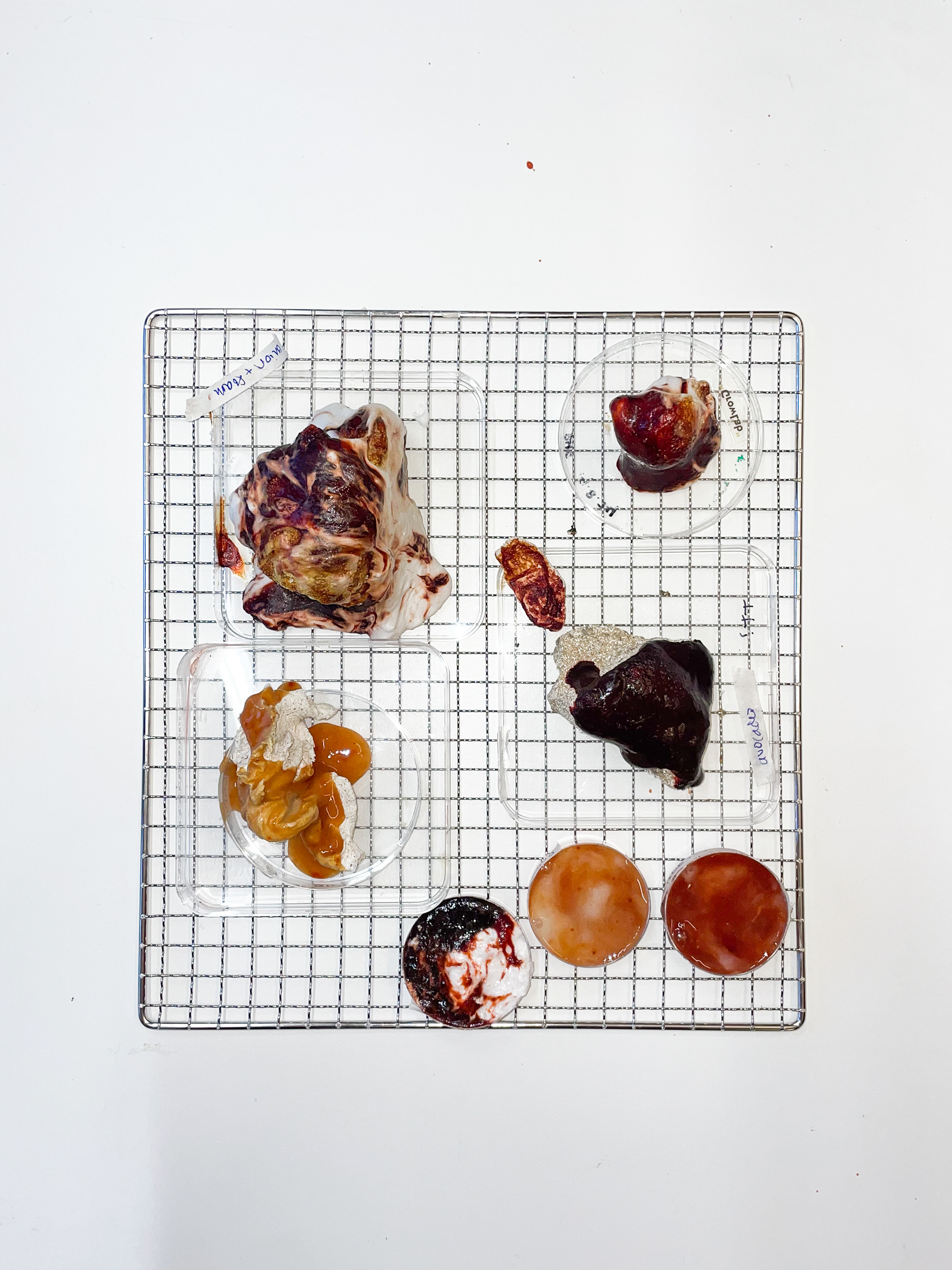
This project asks what it means for a sculpture to exist beyond its permanence as an object. In this context, the sculpture is understood not as an endpoint but as a stage within a biological cycle of transformation — a form that will decay, dissolve, and return to the soil. The work imagines whether art practices can be regenerative: participating in care, in healing, and in resistance to extraction by rethinking material sourcing and recognising the agency of materia as it changes and decays – nourishes or disrupts the environments and ecosystems.
These sculptures and material samples are formed from locally sourced food waste, paper waste, biochar and plant-based pigments and all binders are non-toxic, bio-based, and biodegradable. The material has drawn its inspiration from clay and its methods. The sculpture and the samples are firm and durable, yet sensitive to water.
///
////
Initially, the aim of the project was to find an alternative, waste-based sculpting material that behaves similarly to clay. The material can be shaped using hand-building techniques and eventually dries into a hard, durable, and resistant form.
As part of the process, I have reflected on the agency of the material — how works created from these substances continue to have an effect after they leave my hands. How do they interact with the soil, the organisms, and the ecosystem in which they eventually might decompose? I am exploring whether, in this context, art could be regenerative and decolonial, that forces us to consider the origins of materials, extractivism, and the impacts it generates on both ecological and social dimensions.
I am interested in exploring what could regenerative artistic practices look like when sculpting with organic waste? But also, I am interested in exploring of the significance of preservation, and in what situations does slow decomposition become more meaningful than conservation?
